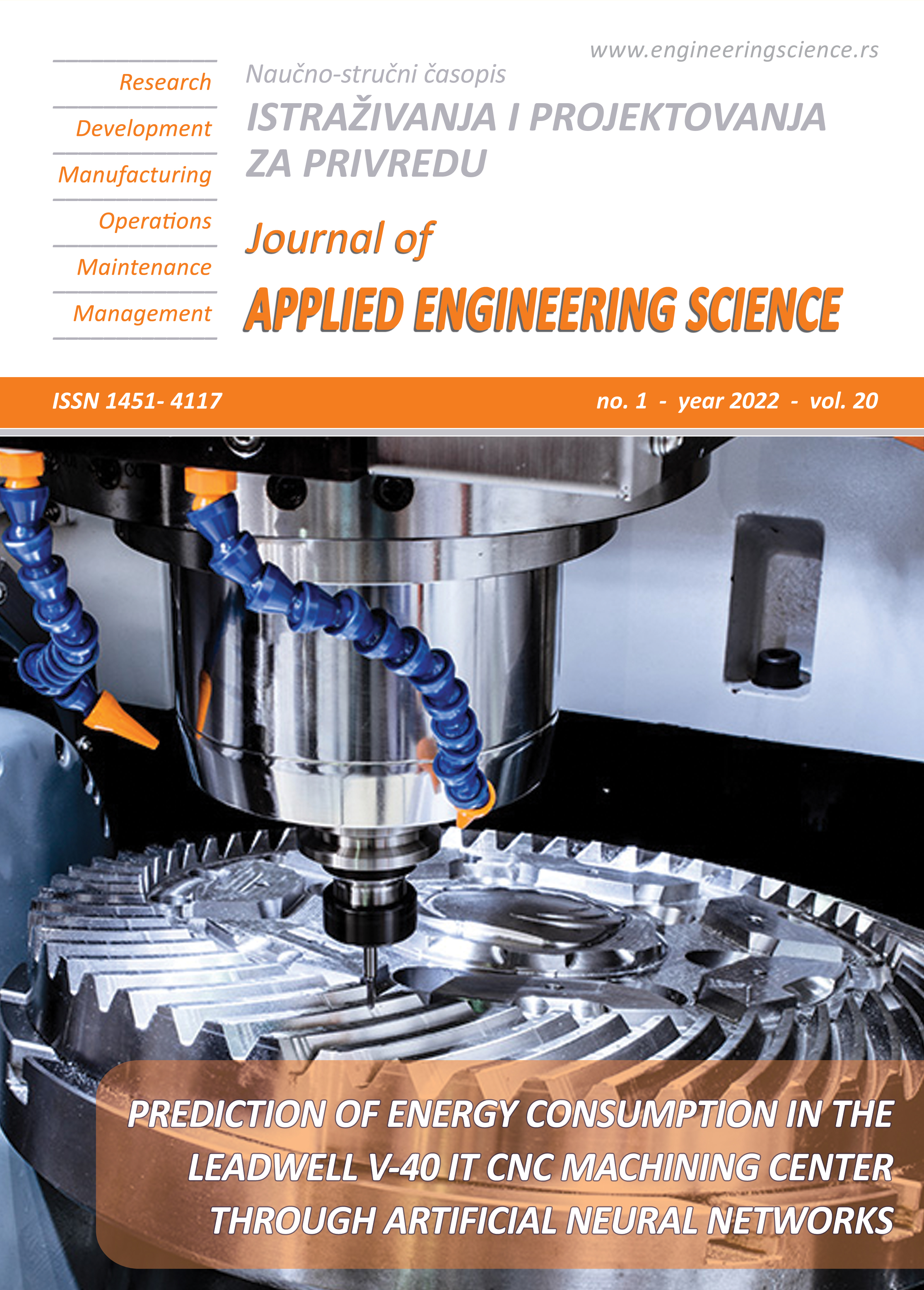IMPLEMENTATION OF FELDSPAR AS PARTIALLY REPLACEMENT MATERIAL IN CEMENT MORTAR (EXPLORATION AND APPLICATION)
Abstract
This paper aims to explore and evaluate the use of Jordanian Feldspar as a natural resource partially replacement material for each of cement and sand in cement mortar. First, Al-Jaishia area was explored through a global positioning system (GPS) navigation to gather site samples of Feldspar raw material. Afterward, cement and sand were partially replaced by Feldspar with substitution ratios of 5%, 10%, 15%, 20%, and 25% for each. The study included the effect of cement replacement on normal consistency and setting time for cement paste. The water content along with initial and final setting times increased via the increment of cement replacement ratio. Moreover, mechanical properties (compressive, flexural, and residual compressive strengths) of cement mortar due to both cement and sand replacement were evaluated. The compressive and flexural strengths after 3, 7, and 28 days of curing were examined for both cement and sand replacement. While, residual compressive strength for cement replacement after 28 days was measured at elevated temperatures of 400°C, 600°C, and 800°C. The compressive and flexural strengths decreased by increasing the Feldspar replacement ratio for both cement and sand at all specimen ages. Whereas, heat resistance properties were improved by cement/Feldspar replacement. The best result for residual compressive strength was obtained at 15% replacement ratio and 400°C temperature.
References
Feldspar, W. i..Retrieved from Industrial Minerals Association of North America,fromhttps://www.ima-na.org/page/what_is_feldspar,(2017).>
Shakrour, O., Rabba, I., Sadeq, A., Sahawneh, J., Madanat, M. (2014). Mineral status and future opportunity. Feldspar. Ministry of Energy and Mineral Resources.
Bender, F. (1975). Geology of the Arabian Peninsula.Geol. Surv. Prof. Paper, 560.
McCourt, W., Ibrahim, K., Abdelhamid, G., Barjo. (1990). The geology, geochemistry and tectonic setting of the granitic and associated rocks in the Aqaba and Araba complexes of southwest Jordan. Amman
Khoury, H. N. (2019). Industrial rocks and minerals of Jordan: a review.Arabian Journal of Geosciences, vol. 12, no. 1, 12-20.
Shakrour, O., Tarawneh, K., Jamal, D. (2010). Exploration, evaluation and investment opportunities of feldspar ore deposits in Jordan. 6th Jordanian International Mining Conference. Amman.
Kamolchanok, K., Danupon, T. (2021). Compressive strength and durability performance of mortar containing palm oil boiler clinker aggregate, rice husk ash, and calcium bentonite.Journal of Applied Engineering Science, vol. 19, no. 1, 193 - 203, DOI:10.5937/jaes0-27580.
Berdoudi, S., Hebhoub, H., Djebien, R. (2017). Valorization and recycling of quarries waste as an addition in cement. Journal of Applied Engineering Science, vol. 15, no. 2, 122-127,DOI:10.5937/jaes15-12743
Khoso, S., Shahzaib, K. J., Aziz, A. A., Hussain, K. Z.(2016). Experimental investigation on the properties of cement concrete partially replaced by silica fume and fly ash. Journal of Applied Engineering Science, vol. 14, no. 3, 345-350,DOI:10.5937/jaes14-11116
Locati, F. e. (2010). Na2O, K2O, SiO2 and Al2O3 release from potassic and calcic–sodic feldspars into alkaline solutions. Cement and concrete research, 1189-1196,DOI: org/10.1016/j.cemconres.2010.04.005
Tian, L., Feng, W., Ma, H., Zhang, S., Shi, H. (2017). Investigation on the microstructure and mechanism of geopolymer with different proportion of quartz and K-feldspar. Construction and Building Materials, vol. 147, 543-549,org/10.1016/j.conbuildmat.2017.04.102
Constantiner, D., Diamond, S. (2003). Alkali release from feldspars into pore solutions. Cement and Concrete Research, vol. 33, no. 4, 549-554,org/10.1016/S0008-8846(02)01001-3
Khoshkbijari, R., Samimi, M., Mohammadi, F. (2020). Effects of Mica and Feldspar as partial cement replacement on the rheological, mechanical and thermal durability of self-compacting mortars. Construction and Building Materials, vol. 263, 120149,org/10.1016/j.conbuildmat.2020.120149
Enríquez, E., Torres-Carrasco, M., Cabrera, M., Muñoz, D., Fernández, J. (2021). Towards more sustainable building based on modified Portland cements through partial substitution by engineered feldspars. Construction and Building Materials, vol. 269, 121334,org/10.1016/j.conbuildmat.2020.121334
Torres-Carrasco, M., Enríquez, E., Terrón-Menoyo, L., Cabrera, M., Muñoz, D., Fernández, J. (2021). Improvement of thermal efficiency in cement mortars by using synthetic feldspars. Construction and Building Materials, vol. 269, 121279,org/10.1016/j.conbuildmat.2020.121279
Rabba, I. (1991). The geology of the Al Quwayra area. Amman: NRA.
Tarawneh, K. e. (2012).Exploration And Evaluation Investment Opportunities of Feldspar Ore in Jordan. Geology and Geophysics, 80-86.
International Hydrographic Organization. (2008). User’s Handbook on Datum Transformations Involving WGS 84 (3rd ed.). International Hydrographic Bureau MONACO.
Younis, G. (2020). The Effect of Using Multiple Coordinate Systems and Datum Transformations on the Calculated Coordinates in Palestine. Bulletin of Geography. Physical Geography Series, vol. 19, 31-41. DOI: http://dx.doi.org/10.2478/bgeo-2020-0008>
Gavish, D. (2010). A Survey of Palestine under the British Mandate, Routledge Studies in Middle East History.1920-1948.
Al-Bayari, O., Sadoun, B. (2011). Vertical datum and coordinate systems in Jordan. International Journal of Information Technology Communications and Convergence, vol. 1, no 4, 444-454. DOI: 10.1504/IJITCC.2011.044645.
ASTM C150, C.-2. (2020). Standard Specification for Portland Cement.
ASTM C778-00. (2000). Standard Specification for Standard Sand. West Conshohocken: ASTM International.
ASTM C33, C.-1. (2018). Standard Specification for Concrete Aggregates. West Conshohocken: ASTM International.
ASTM C109 / C109M-20b. (2020). Standard Test Method for Compressive Strength of Hydraulic Cement Mortars.
ASTM, C187-04. (2004). Standard Test Method for Normal Consistency of Hydraulic Cement. West Conshohocken: ASTM International.
ASTM C191-08. (2019). Standard Test Methods for Time of Setting of Hydraulic Cement by Vicat Needle. West Conshohocken: ASTM International.
ASTM C348-20. (2020). Standard Test Method for Flexural Strength of Hydraulic-Cement Mortars. West Conshohocken: ASTM International.
CEN/TC 104. (2009). EN 12390-3, Testing hardened concrete-part 3: compressive strength of testing specimens. Brussels.
Newman, A. (1983). The specific surface of soils determined by water sorption. Journal of soil Science, vol. 34, 23-32. DOI:org/10.1111/j.1365-2389. 1983.tb00809.x
Han, J., Cho, J., Kim, S., Park, Y., Lee, J. (2020). Characteristics of CO2 and Energy-Saving Concrete with Porous Feldspar. Materials, vol. 13, no. 18, 4204-4220,DOI: 3390/ma13184204.

